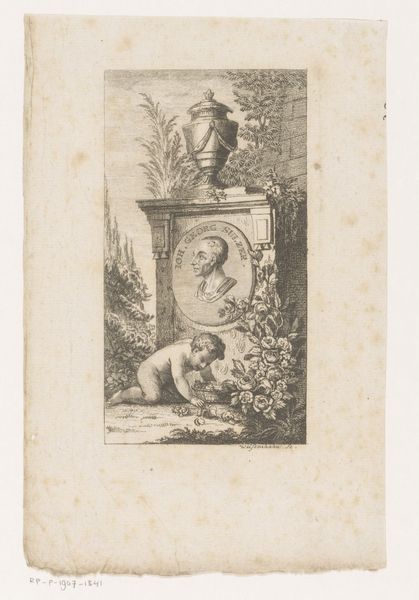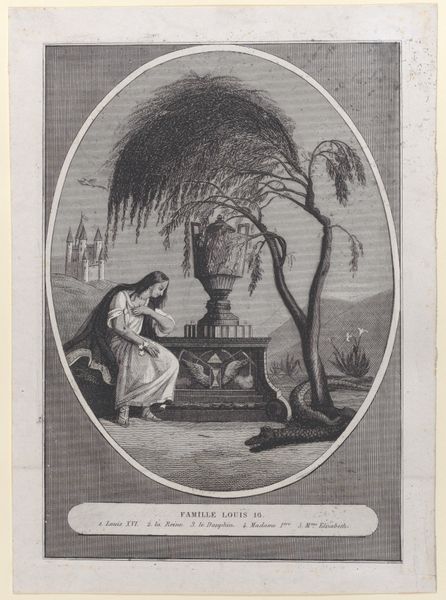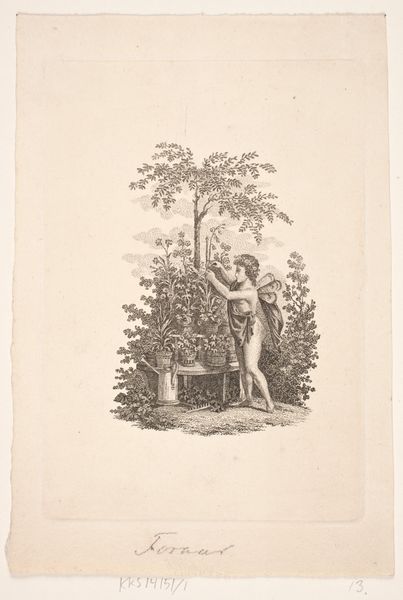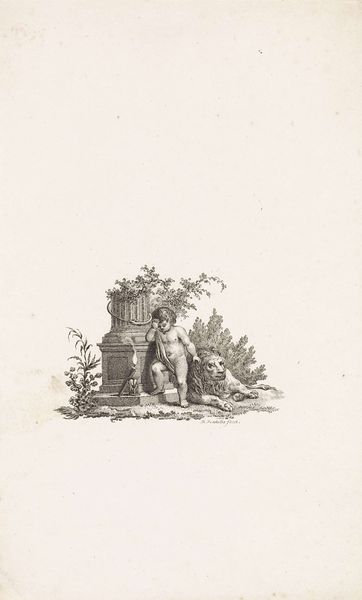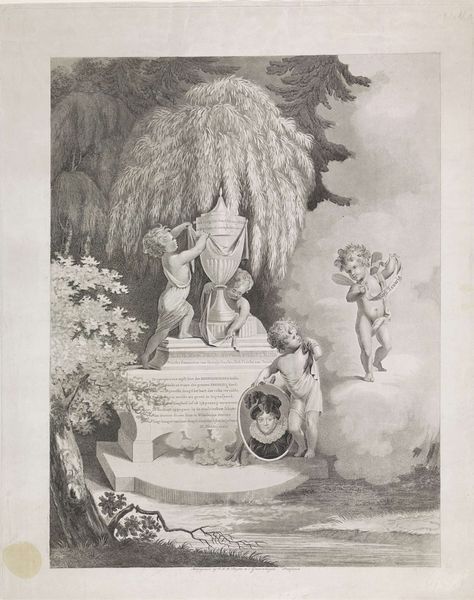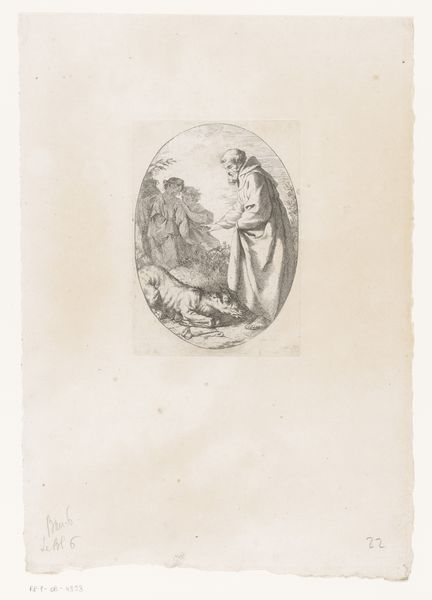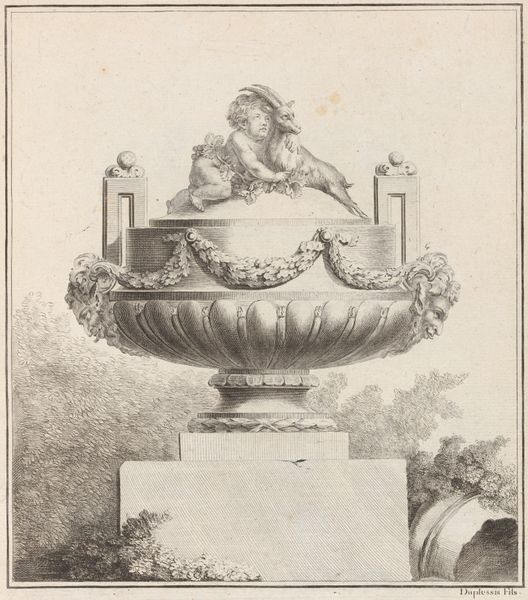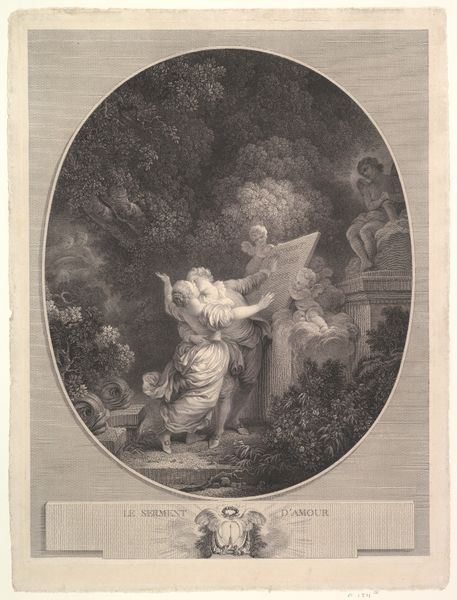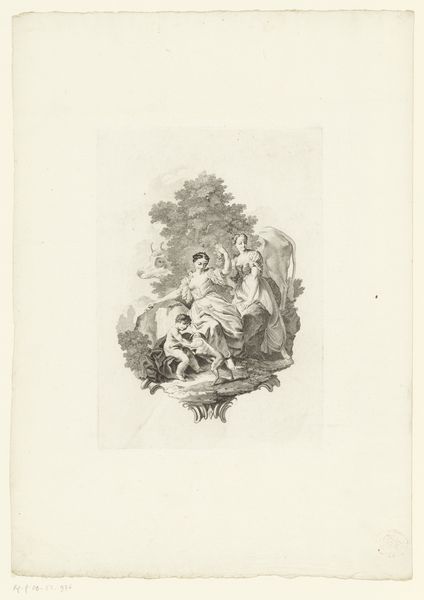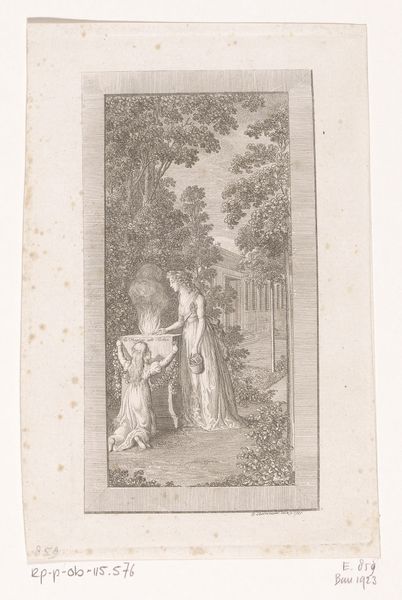
Monument of Mary, Queen of Scots (from "The History of England") 1795
0:00
0:00
drawing, print, etching, pencil
#
portrait
#
drawing
# print
#
etching
#
pencil drawing
#
romanticism
#
pencil
#
history-painting
Dimensions: Sheet: 12 11/16 × 9 13/16 in. (32.3 × 24.9 cm)
Copyright: Public Domain
Curator: Standing before us is "Monument of Mary, Queen of Scots (from \"The History of England\")" a print made using etching and pencil, dating back to 1795, attributed to John George Landseer. Editor: It immediately strikes me as melancholic. The weeping figure at the base, the urn on top of the monument... a romantic idealization of mourning. Curator: The image combines history with the aesthetic sensibilities of its time. It’s a history painting rendered as a print, which raises questions about its accessibility and intended audience. Prints like this allowed for broader circulation of historical narratives beyond the elite. Editor: Absolutely. The monument form itself is telling. A bust of Mary atop a pillar, almost classical in style, yet draped with this weeping, ethereal figure and cherub. It evokes both majesty and profound sadness. Mary is eternally queen, but also eternally mourned. Note the use of funerary symbols of urns and busts surrounded by lush vegetation which further underlines its melancholic mood. Curator: It is interesting how Landseer combines those disparate elements in what almost seems like an exercise in symbolic messaging, doesn't it? Etchings like this were not just artistic expressions, they were also commercial objects. Consider the labor involved, the materials, the reproductive processes… each print an accessible piece of history. Editor: I see that. The medium allowed Landseer to reach a wide audience but more intriguing is how Mary's tragic life becomes almost archetypal through these symbols, inviting contemplation not just on her life but on broader themes of power, loss, and memory. The bust becomes an icon, instantly recognizable and imbued with centuries of significance. Curator: Ultimately, this print prompts us to examine not only the life of Mary, Queen of Scots, but the social conditions and the artistic practices through which her story was transmitted and consumed. Editor: Indeed. It’s a powerful reminder of how symbols and imagery transcend their immediate historical context, continuing to resonate and accrue new layers of meaning over time.
Comments
No comments
Be the first to comment and join the conversation on the ultimate creative platform.


